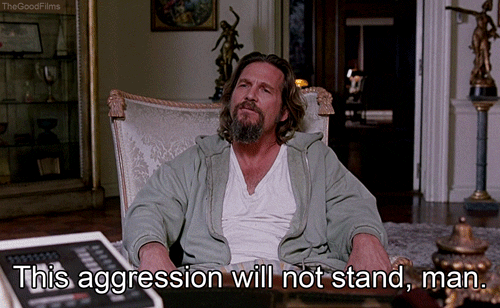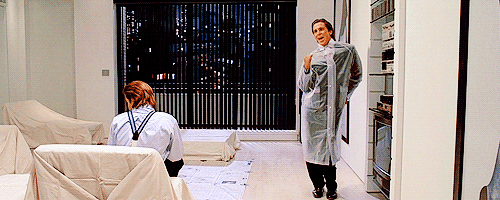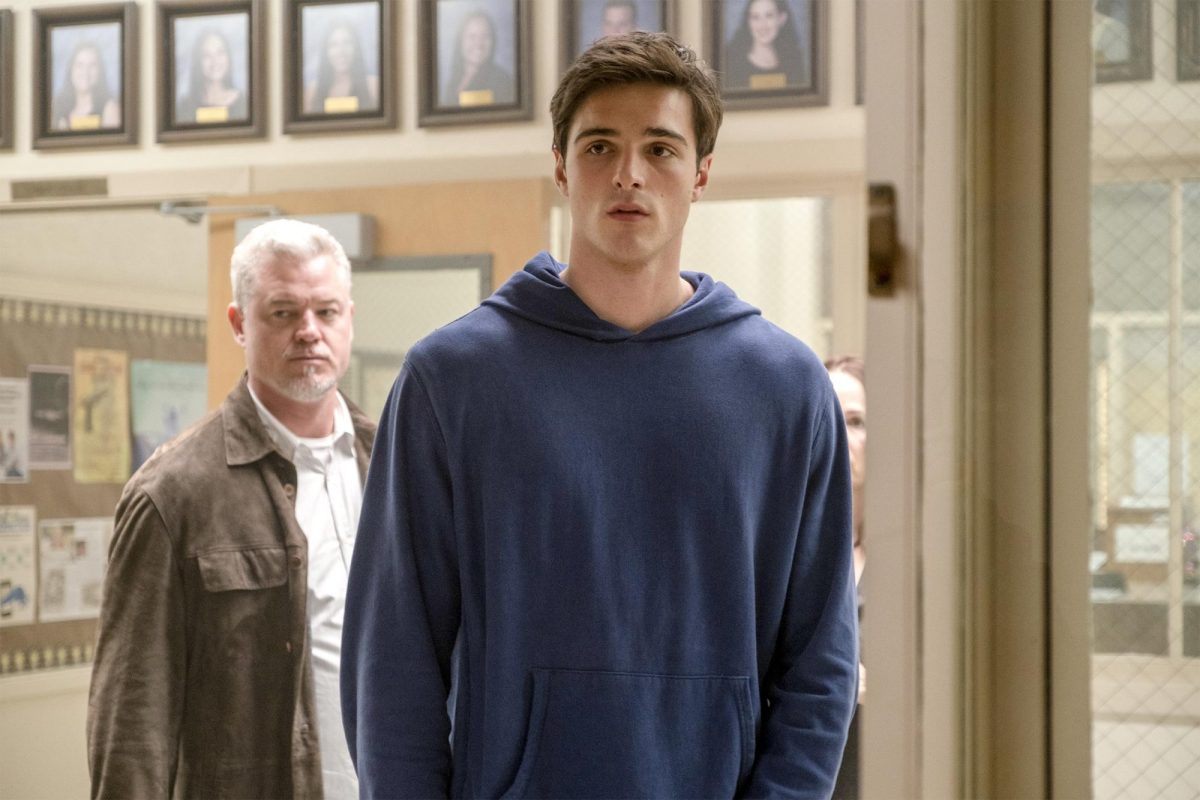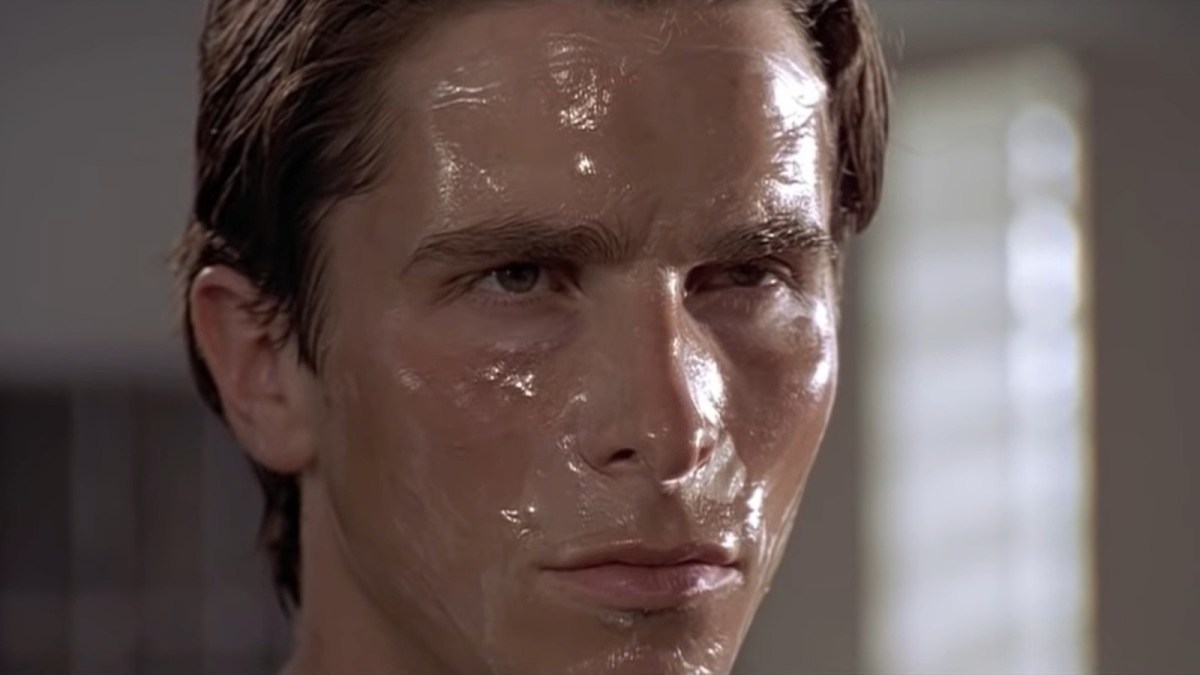There’s been a revival in popularity surrounding Mary Harron’s 2000 film adaptation of American Psycho. Based on the novel by the infamous Bret Easton Ellis, the film is largely the same, albeit taking a more introspective and speculative approach than the novel, which was (surprisingly) even more violent and grotesque in its depictions of protagonist Patrick Bateman’s madness.
I can only rationalize this revival as a symptom of the internet’s newfound adoration for the disturbed male, as a byproduct of the wacky-zany world we live in. I, myself, became a fan of this film about a year ago, when I found it to be an incredibly apt take on how wealth and privilege manifest in a disturbing removal from reality. Of course, I think we can attribute a lot of that to it being directed by a woman, who knew how not to glorify Bateman’s antics and instead artfully portray them in a narratively intriguing way … but that’s just my opinion.
If, however, you find yourself newly acquainted with this film (either via an innocuous introduction, or having found yourself inundated with TikTok edits of Bateman, such as this one, which boggles the mind), you might be wondering what the hell is even going on–especially where the ending is concerned. You might be asking yourself, Jesus Christ, all that buildup, all those horrors, just for nothing to happen? Was all the hype undeserved? Is this really just an “It was all a dream” ending?
To which my answer is, NO! Don’t you dare let that be your takeaway! This film’s ending is so brilliant, and so complex, and it deserves to be recognized as such.

A Quick Recap

The climax of this movie finds Bateman having what can only be described as a nervous breakdown as reality starts to slip away from him. He tries to use an ATM, but the ATM demands that he insert a cat—a living, breathing cat—in order to proceed. So Bateman, confused yet determined, gets ready to shoot a stray cat to complete his transaction. However, a meddlesome woman interferes with this plan, so, naturally, he shoots her.
A police chase ensues, a highly silly and Die Hard-y police chase, that Bateman somehow manages to come out on top of (to his own disbelief). He then tries to go hide in his office, but, finding that his doorman isn’t his real doorman, shoots him and the janitor witness, leaves the building, comes back, and suddenly, the doorman IS his real doorman, who greets him with a smile and lets him in.
While hiding in his office, he frantically leaves a confessional voicemail to his lawyer, Harold Carnes. Then, the next morning, he goes to his coworker Paul Allen’s apartment—Paul Allen, whom he murdered in an iconic act of vengeance, then used his apartment to both lure and store his victims. But the apartment is spotless already, having been bleached to an inoffensive, perfectly-white veneer. The realtor who did this seems to see right through Bateman, asking him to leave after calling his bluff.
The film ends with Bateman going to lunch with his colleagues, all of whom are the same sort of cold, entitled businessmen as he is, and while there, he sees Carnes. He confronts him, asking if he got the message, but Carnes laughs it off, believing that Bateman was his colleague Davis (a running gag in the film, that everyone thinks they’re someone else, because nobody is real enough to be distinguishable) and left a prank voicemail. Bateman is the butt of most jokes, since everyone thinks he’s this dweeby tight-ass, and therefore Carnes believes that this confession was ultimately improbable.
But Bateman keeps trying to convince him that what happened was real, that all those murders did happen, from Allen to the callgirls, and with almost heartbreaking emotion, that he really is Patrick Bateman. In fact, he’s more emphatic about his own identity than he is about the killings. But Carnes, who is growing increasingly disturbed by this seemingly elaborate ruse, gives one final denial: that it simply can’t be true, because he had dinner with Paul Allen twice, in London, just ten days ago.
With no choice but to resume his lunch like normal, Bateman sits down with his colleagues, who are watching Ronald Reagan give a presidential address and having a shallow discussion about his morals, or lack thereof. And Bateman laughs, manically, at how ridiculous it all is, only to be shut down and ignored. Cue the ending monologue.
There are no more barriers to cross. All I have in common with the uncontrollable and the insane, the vicious and the evil, all the mayhem I have caused and my utter indifference toward it I have now surpassed. My pain is constant and sharp and I do not hope for a better world for anyone. In fact, I want my pain to be inflicted on others. I want no one to escape, but even after admitting this, there is no catharsis. My punishment continues to elude me and I gain no deeper knowledge of myself. No new knowledge can be extracted from my telling. This confession has meant nothing.

So … what does it mean?

Many debate whether or not this ending was “real,” if any of it was real, and struggle to understand what the point of it all was. Ironically, in that sense, they have a lot in common with Bateman. But ultimately, that is the point: that there was no point to it, and that it was senseless, and that no matter what actually happened, it will never matter in the slightest to anyone other than Bateman and the people he killed.
Perhaps this seems silly, incredibly silly, almost offensively silly. That could be chalked up to the fact that a story like this is difficult to translate into film, as author Ellis had feared. As he put it, “the medium of film demands answers,” which runs the risk of making the original story “infinitely less interesting.” Novels can convey so much more just by their own nature, and therefore, some of the nuances of a story like this can get lost in translation.
But I happen to think Harron did a fantastic job of translating it, nonetheless. She deliberately left the ending open-ended because she understood that a story like this shouldn’t even have a defined ending. A defined ending would have ruined the intent of the story, which was to expose the insidiousness of “elite American society.” Ellis wrote this story to parallel his upbringing and education as a wealthy WASP, and in a way, it’s an exercise in catharsis as Bateman works through the extremities of the narcissism, materialism, and indulgences of the times. And while Harron did away with Ellis’ initial screenplay in favor of her own, having deemed his version too “moralistic,” she ultimately helped reinforce the novel’s original commentary on social privileges.
Which is good. Great, even, especially coming from the perspective of a woman, as women were Bateman’s primary targets throughout the film, and women are often the foremost targets of privileged men who feel as though they have the world at their fingertips. A more modern example is Nate Jacobs from Euphoria, who struggles to deal with his own pain caused by toxic masculinity, and thus finds it easier to cope by judging and harming the women around him.
Therefore, it doesn’t really “matter” if he killed all those people, all those women, because the message is that the society he lived in (and the society we still live in) will continue to indulge and allow these behaviors—barely paying them any attention at all. The rich elite of our country will torture themselves with the boredom and tedium of privilege, and in retaliation, they will seek any behavior to convince themselves that it has any meaning at all.
This boredom and tedium, meanwhile, will endure at the cost of any solid sense of identity, any authenticity, any real love for life or the people in it. Everyone in Bateman’s social circle is having an affair. Everyone is talking shit on everyone. Nobody knows who anyone is, at any point, and everyone is always mistaking someone for someone else. And even if and when they know about the killings, like the realtor, they’re perfectly willing to ignore them in favor of their own interests.
The few people who manage to break this façade are ultimately the ones who throw Patrick off his game: Timothy Bryce, Bateman’s coworker, is the sort of person that Carnes would have actually believed to be capable of such violence, because he is the most emotive; consequently, he’s the only one who really seems to notice Bateman’s weird fluctuations in mood, but because he benefits just as much from their shared privileges, he says nothing.
Luis Carruthers is supposedly in a heterosexual relationship, but he’s actually very, very gay, specifically for Patrick, and to a man who’s supposed to exemplify American Exceptionalism in the ’80s, this advance freaks Patrick out into avoidance. And finally, there’s sweet Jean, his secretary who genuinely seems to love him, and whom he wishes he could be with (a plot point that is expanded upon in the novel) but knows he “can’t control” himself around her.
Now, to tie it all up, let’s talk about all the violence itself. Maybe you’re still itching to know whether or not the murders actually happened. Maybe you think it matters, for your own reasons. I personally think they didn’t, and that the only person Bateman actually killed was the homeless man at the very beginning of the movie, as bit of social commentary on wealth disparities. I think the rest of it was just a delusion on his part. But what I find interesting is how peoples’ interpretations of the violence differ, and I’ve continually read interesting interpretations over the years. All of them could potentially be plausible. All of them having meaning (more or less). But still, the point, as illustrated by both Ellis and Harron, remains clear: Ultimately, it just doesn’t matter.
This analysis has meant nothing.
… Nah, just kidding. It means a lot in the society we live in. That’s why I think this movie has only continued to gain traction. As we find ourselves getting entrenched even deeper in a late-capitalist hellworld, we only find a story like this more relatable. Even now, good and innocent people are tortured and murdered by bored people like Bateman, who get off scot-free in interest of capital and upholding the status quo.
Is there a solution to it all? Well, lots of people have lots of opinions on that. All I can say is that we need to take care of one another until we solve it, because for every person shocked by a story like American Psycho, there’s at least 100 actual American Psychos running around, waiting for their next source of entertainment to quell that void-like boredom within.
(featured image: Lionsgate)










Published: Sep 30, 2022 05:22 pm